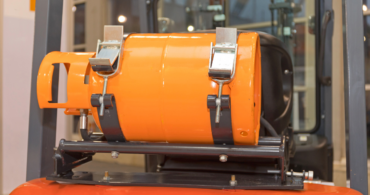Cleaning up your workspace can often be a daunting prospect. When that workspace is an entire warehouse, the job may seem overwhelming. Fear not, we have some warehouse setup ideas and tips for how to organize a warehouse that can turn that cluttered distribution center into a clean and efficient space.
The negative consequences of a messy warehouse can include:
- Increased picking errors: Disorganized inventory makes it difficult for employees to locate the correct items, leading to more frequent picking mistakes.
- Decreased efficiency: Poor organization causes workers to spend more time searching for products, which slows down the overall workflow.
- Higher safety risks: Cluttered aisles and overstocked shelves increase the chance of workplace accidents and injuries.
- Low employee morale: This is often an overlooked aspect of a disorganized warehouse. Working in a chaotic environment can frustrate employees, leading to reduced morale, which directly impacts productivity and frequently leads to higher turnover rates.
- Poor inventory control: Messiness often results in lost, misplaced or miscounted items, making inventory management a disaster.
Identifying what went wrong
A messy warehouse is rarely the result of one single issue. Instead, it usually stems from a combination of operational challenges and oversight. So, whether you’re dealing with a large or small warehouse organization, here are some of the most common reasons why warehouses fall into disarray.
Poor layout and space utilization
When shelves are overstocked or improperly sized for the inventory being stored, clutter accumulates quickly. Additionally, failing to make use of vertical space can result in congested aisles and cramped workspaces.
Conduct a thorough review of your warehouse organization layout to identify where space is being wasted. Installing new shelving or racking systems can solve many vertical storage issues. You also may be using the wrong storage units for your inventory. Make sure your storage solutions make sense and that products are easily accessible.
Excess Inventory
Another common cause of a messy warehouse is holding onto excess inventory. Overstocking occurs often because of poor demand forecasting or reordering failures. Excess inventory takes up valuable space, creates congestion in storage areas and can make it difficult for pickers to navigate the work floor and locate items. Also, more products mean there is an increased chance for them to be misplaced or damaged.
Lack of defined processes
Without clearly defined and standardized processes for receiving, storing, picking and shipping goods, chaos can quickly ensue. When warehouse workers don’t have specific guidelines to follow, items may be stored wherever space is available, which can lead to confusion and inefficiency. Without process standardization, each worker tends to adopt their own organization methods, which makes it difficult (if not impossible) for others to find items when they are needed.
Inconsistent clean-up routines
If employees are not regularly cleaning up after themselves or there is no scheduled time for tidying up, clutter quickly accumulates. Small messes, such as scattered packing materials or disorganized items, can quickly snowball and lead to inefficiencies and bottlenecks.
Overcoming a messy warehouse
A disorganized warehouse can severely impact operations, from increased errors in picking and packing to safety risks and delays. Once your problem is (or problems are) identified, here are some ideas to restore order.
- Evaluate current processes: Take the time to assess your current warehouse processes. Where are the bottlenecks? Are there steps that are redundant or unnecessary? Identifying and correcting these issues while streamlining processes will help prevent future issues.
- Conduct a complete warehouse clean-out: Clear all aisles, remove unnecessary clutter and start over. Take stock of your entire operation and get rid of any unused or obsolete items.
- Reconfigure the layout: After cleaning, review your current layout to decide if it is still effective. As businesses grow and change, so do their storage needs. A fresh layout based on current demand can create a more efficient warehouse.
- Invest in storage solutions: Using outdated or inefficient storage systems is often the main cause of a disorganized warehouse. Carefully evaluate your current storage solutions to discover if new shelving, racking systems or storage bins will help your workers ensure that every item is in its designated space.
- Develop standard operating procedures: Analyze the way your inventory is received, stored, picked and shipped. Decide if there are any inefficiencies and create clear standard operating procedures to overcome them, which reduces the likelihood of items being misplaced or lost.
- Train employees: Once you have well-thought-out standard operating procedures in place, you need to let your current (and future) employees know about them. Create a thorough training system that ensures everyone is on the same page.
Warehouse organization ideas
Whether you are setting up a new warehouse or redesigning an existing one, there are several warehouse ideas to consider. The goal is to design the space to accommodate current needs while also being adaptable for future growth.
Design for flow
The most efficient warehouses are designed with flow in mind. This means goods move smoothly from receiving to shipping. Avoid placing too many obstacles or tight turns along the way to ensure that workers and equipment can move throughout the workspace as safely and efficiently as possible.
Allow for future expansion
Change is inevitable, and since you want your business to grow, your warehouse organization layout should be able to adapt for future growth. Leave space to add more shelves or racks (for example, make the aisles slightly wider than necessary). This enables you to expand without overhauling the entire layout.
Prioritize safety
With heavy equipment and workers consistently moving around a warehouse, safety is essential. Ensure there are clearly designated paths for both workers and heavy equipment and install mirrors at intersections and hard-to-see areas.
Proper lighting is often overlooked, but it can help prevent accidents, especially in high-traffic areas. Use bright, energy-efficient lighting to ensure workers can see clearly. Also, be sure to install clear, easy-to-understand signage to help guide workers and pedestrians around the warehouse, identify emergency exits and pinpoint the location of fire extinguishers and other emergency equipment.
At Texas Motive Solutions we understand that warehouse organization is of paramount importance. We help ensure that your warehouse runs as efficiently as possible by keeping your material handling equipment operating at its best. Our complimentary forklift fleet performance analysis can identify the best batteries for your needs, and our top-of-the-line forklift batteries and accessories fulfill those requirements. Please call us at (888) 316-2459 or fill out this form to learn about our services and discover everything that we can do for you.



